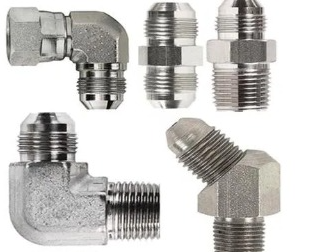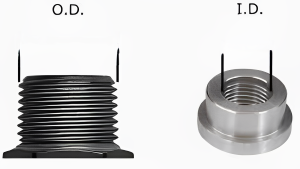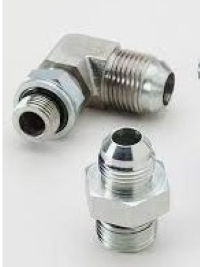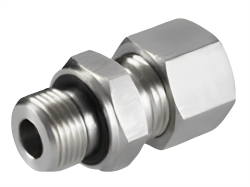In the realm of industrial machinery and heavy equipment, hydraulic systems play a pivotal role in powering and controlling various operations. These hydraulic systems rely on an intricate network of components, with hydraulic fittings being a crucial part of the setup. In this comprehensive guide, we will delve into the world of industrial hydraulic fittings, focusing on the most common types used in the industry.
Understanding the Importance of Hydraulic Fittings
Before we dive into the specifics, let’s establish the fundamental role of hydraulic fittings within the context of industrial machinery. Hydraulic fittings are the connectors that facilitate the transfer of hydraulic fluid between different components of a hydraulic system. They are essentially the joints that ensure a seamless flow of fluid, allowing hydraulic systems to function effectively.
The Most Common Hydraulic Fitting: The JIC 37° Flare Fitting
When it comes to the most prevalent hydraulic fitting in the industry, the JIC 37° flare fitting reigns supreme. Joint Industry Council (JIC) fittings are widely used due to their versatility, reliability, and ease of installation. These fittings feature a 37-degree flare seating surface, making them highly efficient in minimizing leaks.
Advantages of JIC 37° Flare Fittings
1. Leak Resistance
The 37° flare angle of JIC fittings ensures a secure and tight seal, reducing the risk of hydraulic fluid leakage. This is crucial for maintaining the efficiency and safety of hydraulic systems.
2. Easy Assembly
JIC fittings are known for their user-friendly design. They can be assembled quickly and without the need for specialized tools, saving both time and labor costs.
3. Compatibility
One of the key reasons for the widespread use of JIC fittings is their compatibility with a wide range of hydraulic systems and components. Whether you are working with hoses, pumps, or cylinders, JIC fittings are likely to be compatible.
NPT Fittings: A Close Competitor
While JIC fittings hold the top spot as the most common hydraulic fitting, National Pipe Taper (NPT) fittings are not far behind. These fittings are known for their robust construction and ability to handle high-pressure applications.
Key Features of NPT Fittings
1. Threaded Design
NPT fittings utilize a threaded connection, which enhances their strength and reliability. This design is particularly advantageous in situations where vibrations and movement are prevalent.
2. High Pressure Rating
NPT fittings are well-suited for hydraulic systems that operate under high pressure. Their thread design allows for a secure connection that can withstand substantial force.
Metric Hydraulic Fittings: A Global Perspective
In the global landscape of hydraulic systems, metric hydraulic fittings play a significant role. These fittings adhere to metric measurements and are commonly used in regions where the metric system is the standard.
Benefits of Metric Hydraulic Fittings
1. Worldwide Applicability
Metric fittings are recognized and utilized worldwide, making them a go-to choice for industries with an international presence.
2. Precise Sizing
Metric fittings are designed with precision in mind, ensuring a snug fit that minimizes the risk of leaks or inefficiencies.
Bite-Type Fittings: A Specialized Solution
For applications where a higher degree of sealing and reliability is required, bite-type fittings come into play. These fittings are designed for extreme conditions and are known for their exceptional performance in hydraulic systems subjected to heavy loads and vibrations.
Notable Characteristics of Bite-Type Fittings
1. Biting Action
Bite-type fittings utilize a biting action on the tubing, creating a strong and secure connection. This biting action provides exceptional resistance to vibration-induced loosening.
2. Durability
In harsh industrial environments, durability is paramount. Bite-type fittings are constructed to withstand extreme conditions, making them suitable for rugged applications.
Conclusion
In the realm of industrial hydraulic fittings, the JIC 37° flare fitting stands out as the most common choice due to its versatility and leak resistance. However, it’s important to note that various other fittings, such as NPT, metric, and bite-type fittings, have their own unique advantages and are chosen based on specific application requirements.
Understanding the nuances of hydraulic fittings is essential for optimizing the performance and reliability of hydraulic systems in industrial settings. By selecting the right fitting for the job, you can ensure the smooth operation of machinery and equipment, minimizing downtime and enhancing productivity.
So, the next time you encounter the intricate world of hydraulic fittings in the industrial landscape, you’ll be well-equipped with the knowledge needed to make informed decisions. Remember that the choice of hydraulic fitting can significantly impact the efficiency and safety of your hydraulic systems.
Post time: Sep-21-2023





